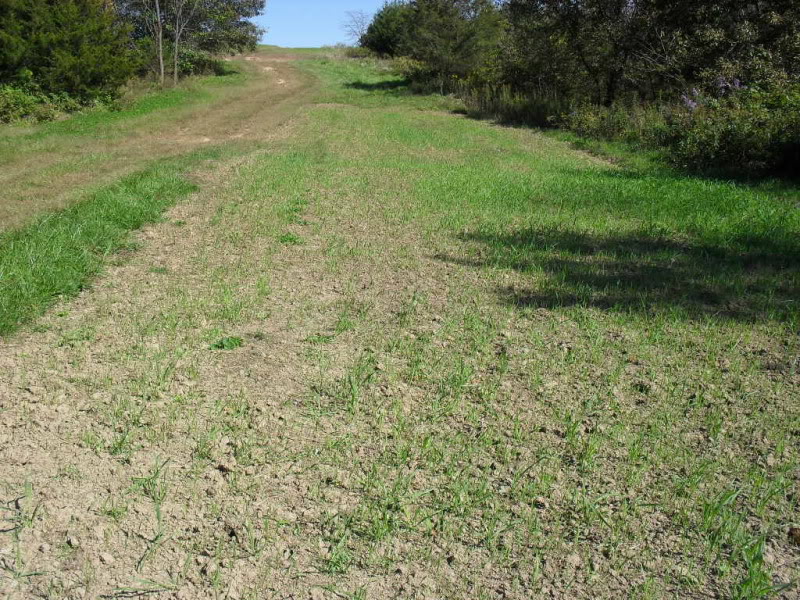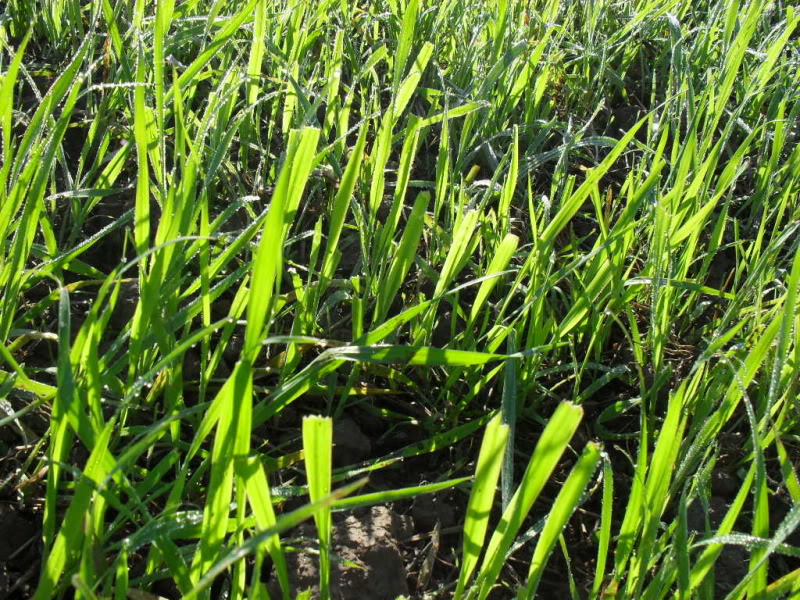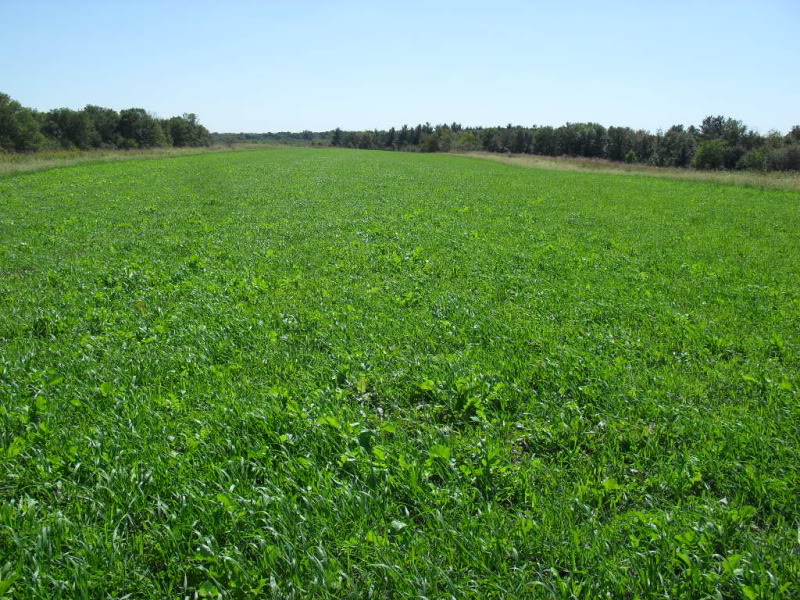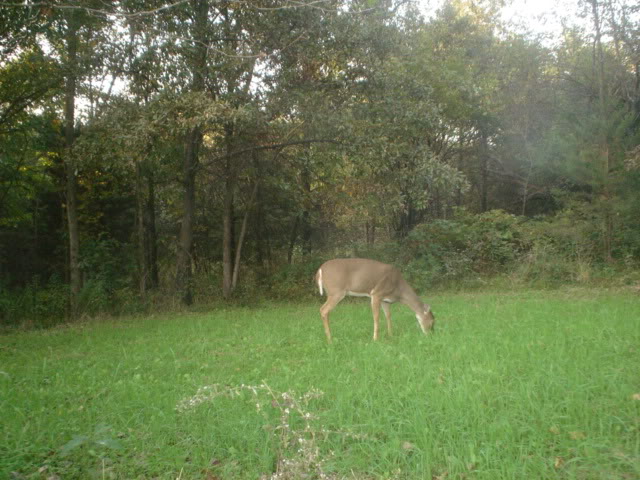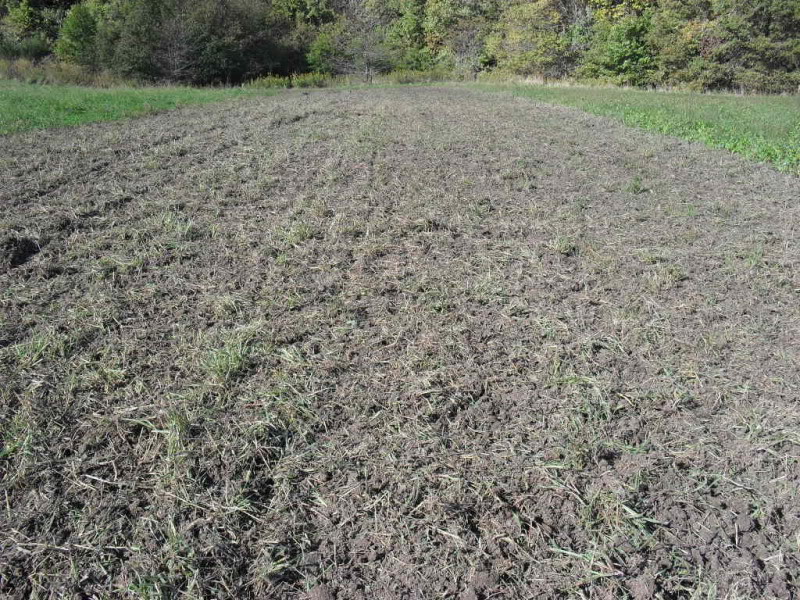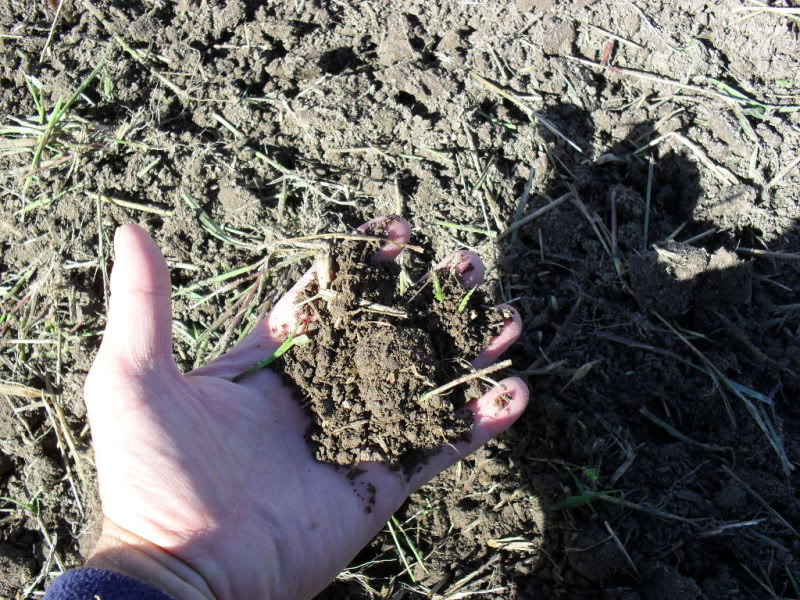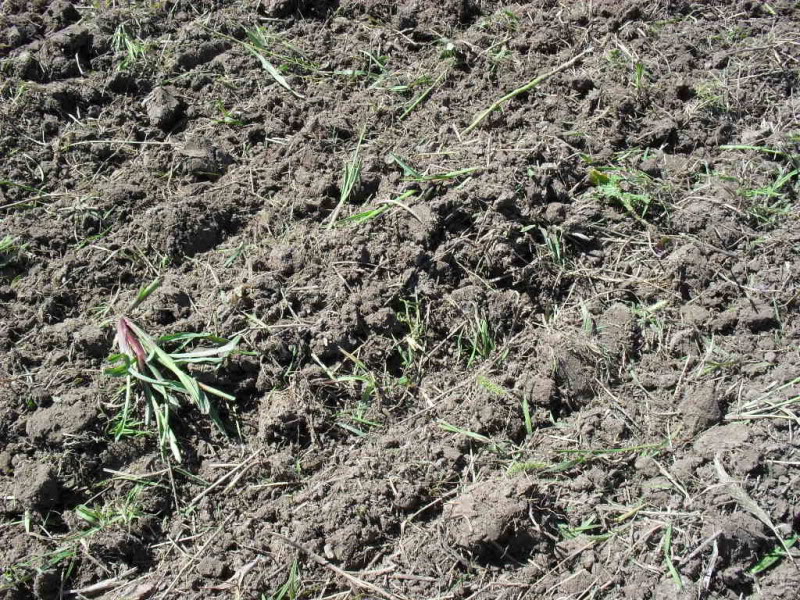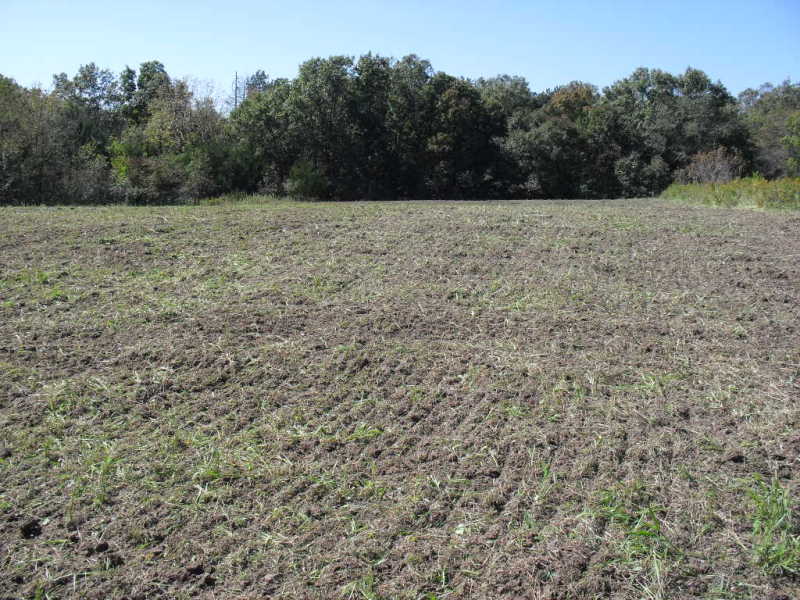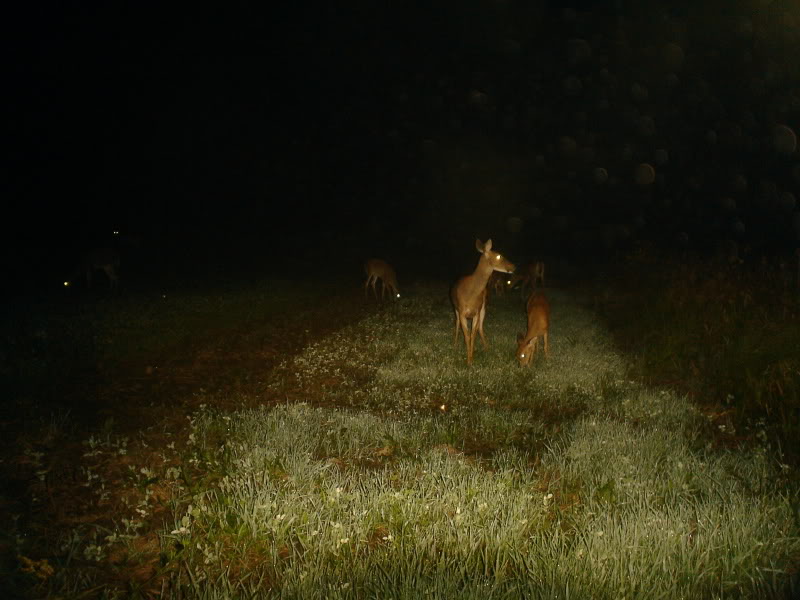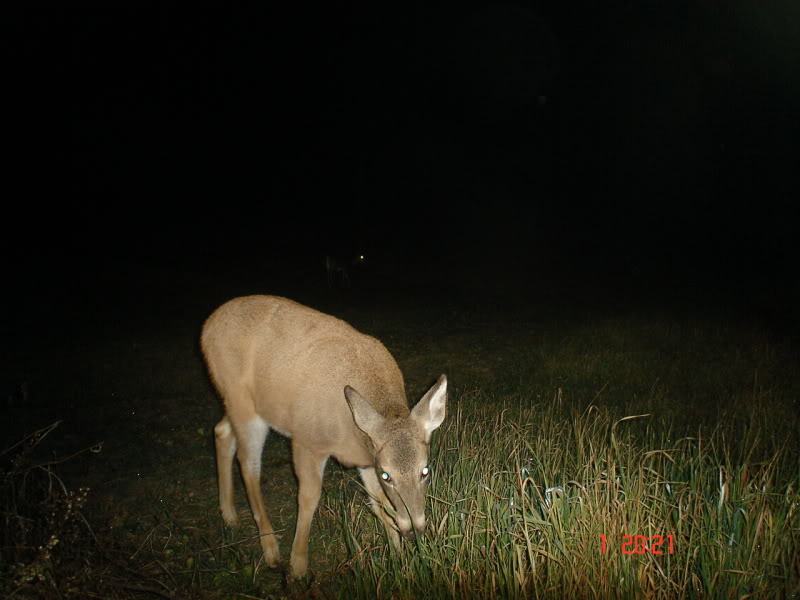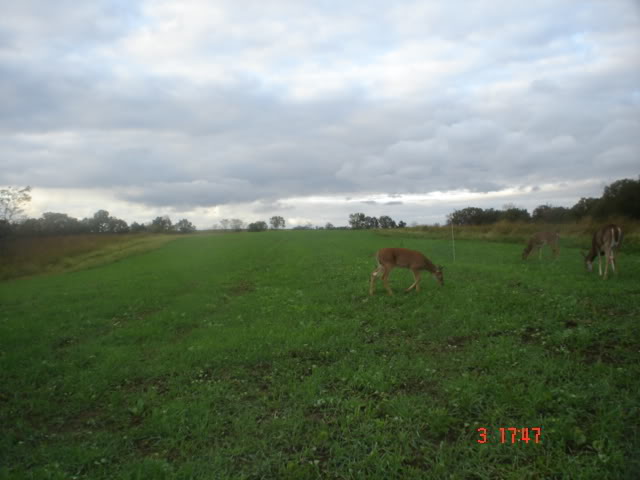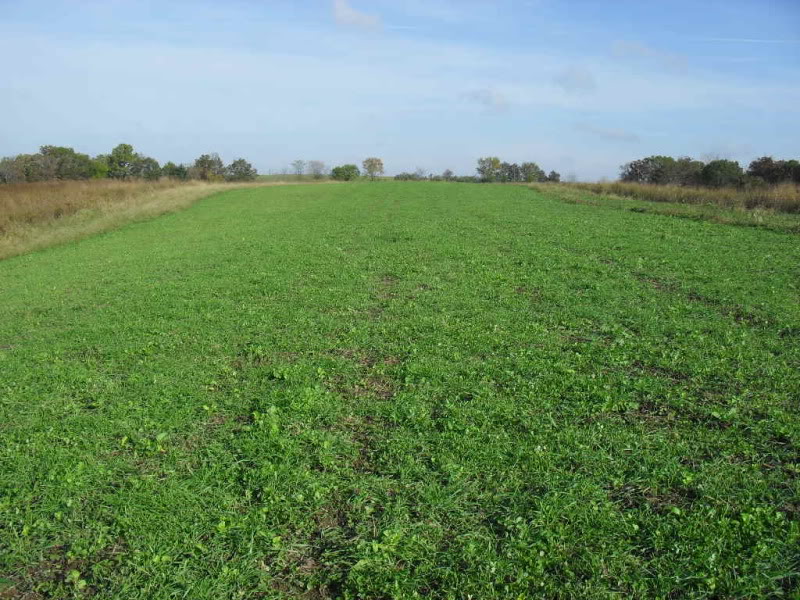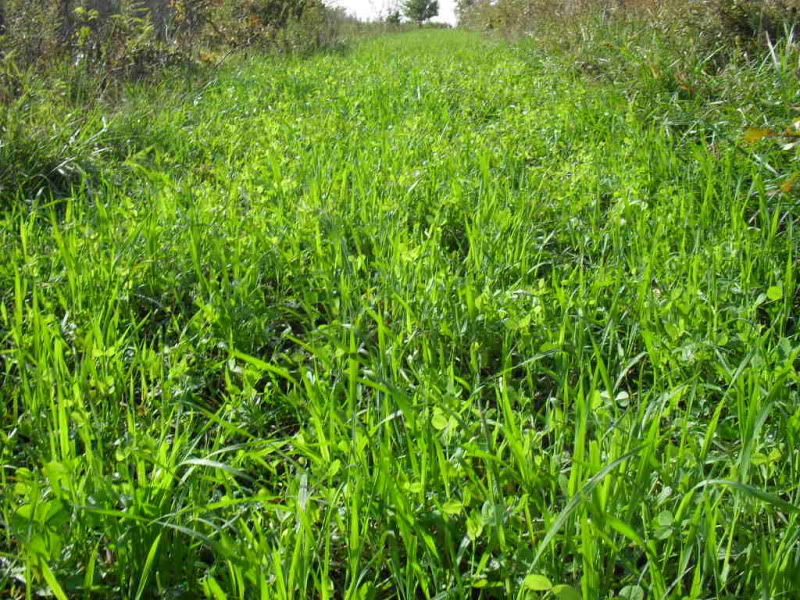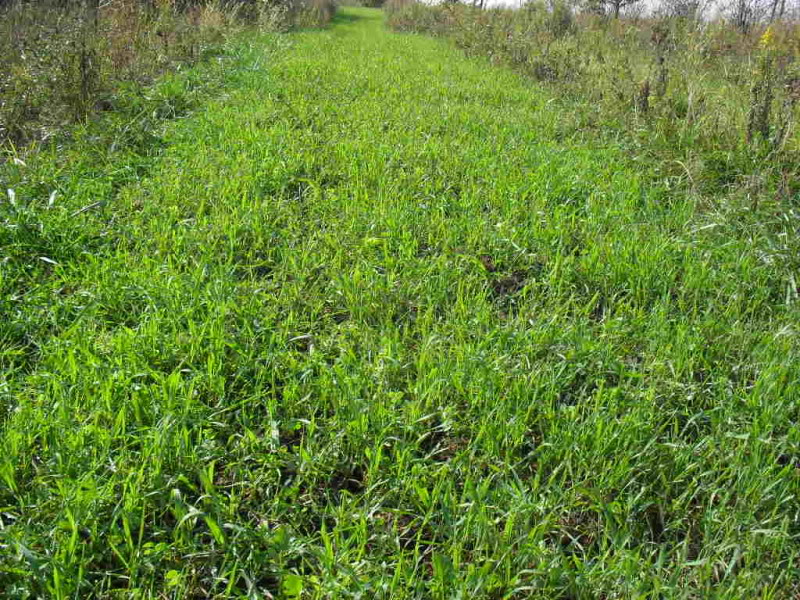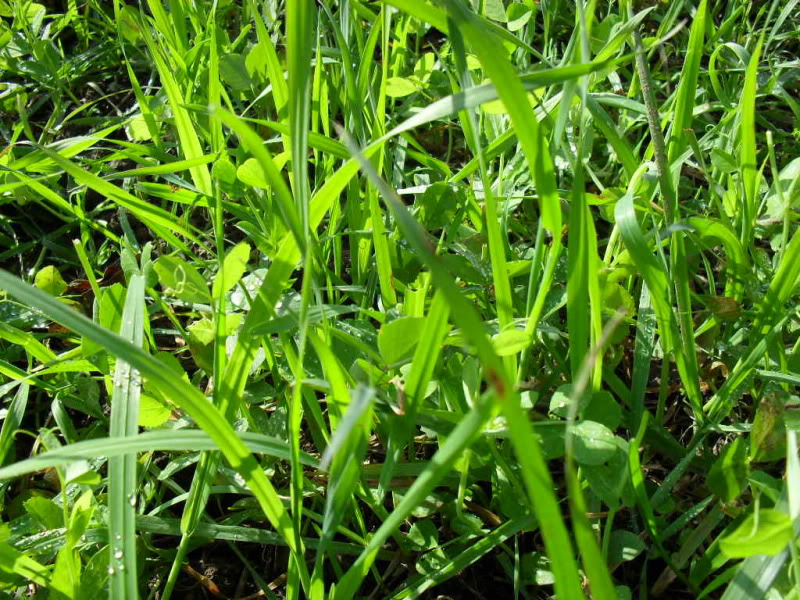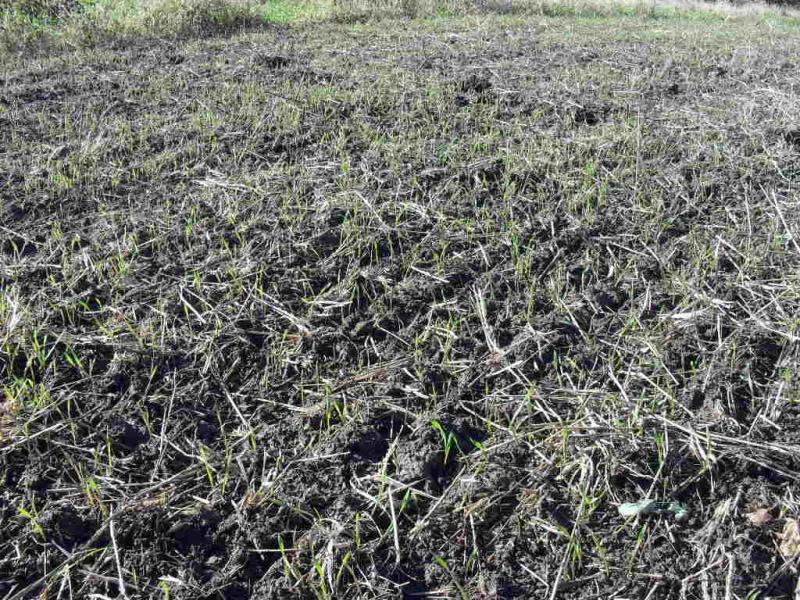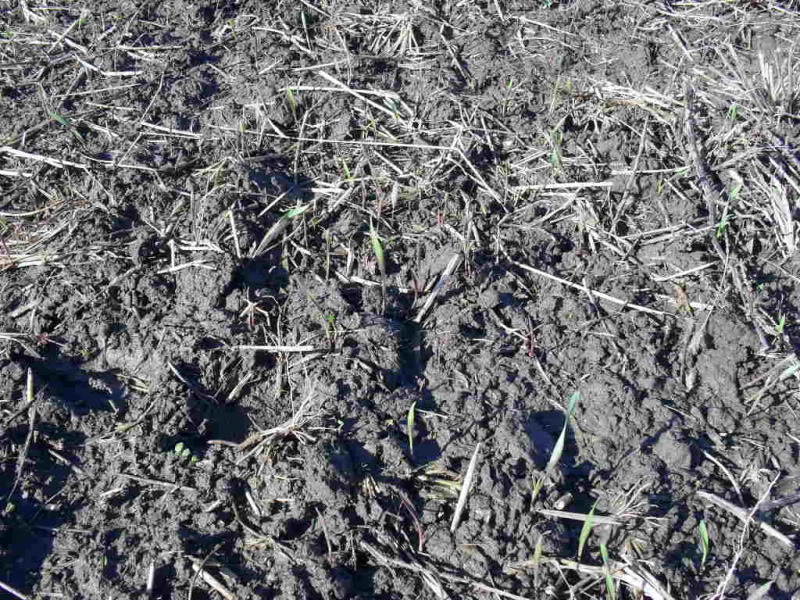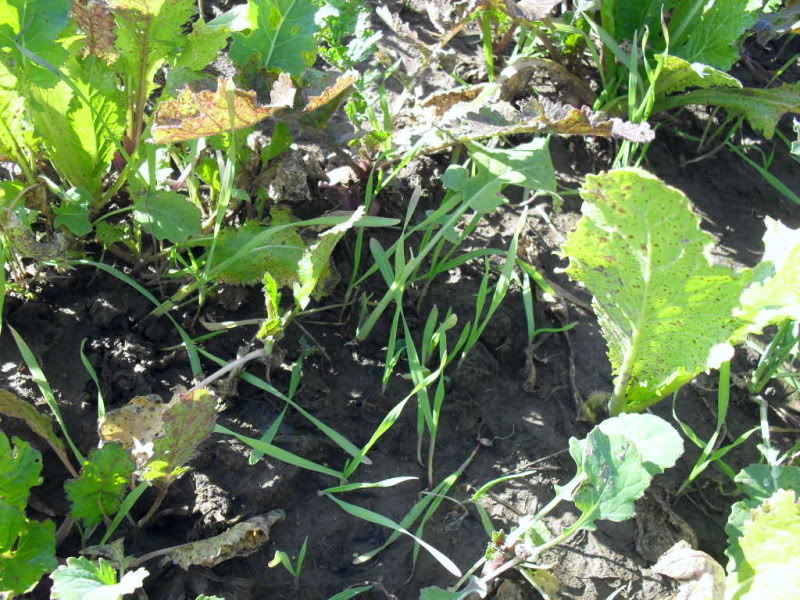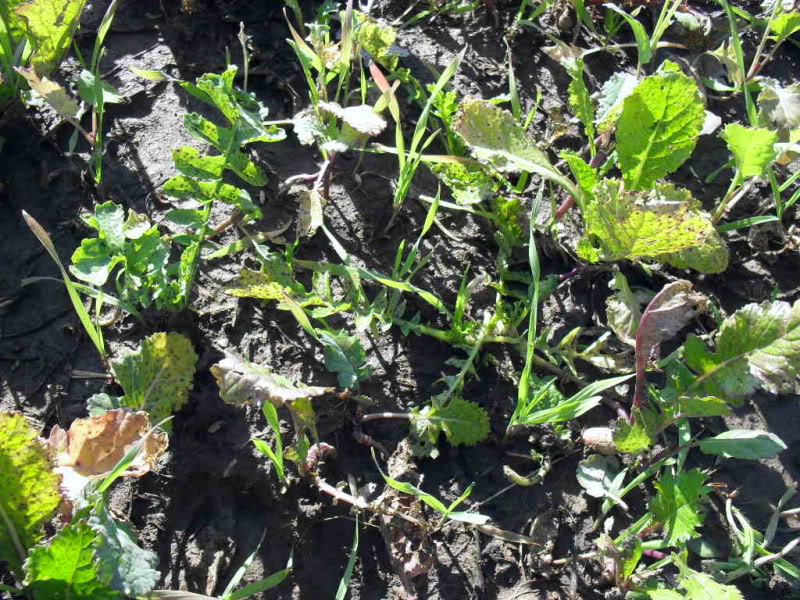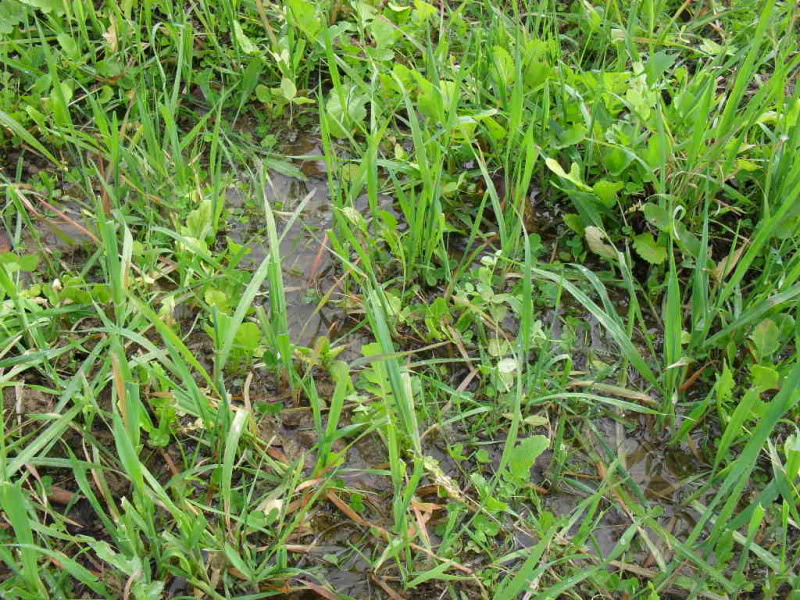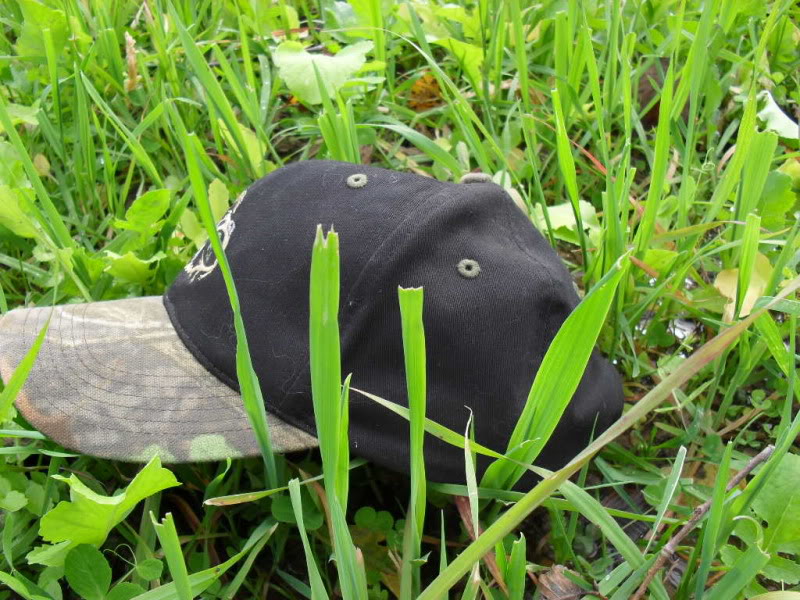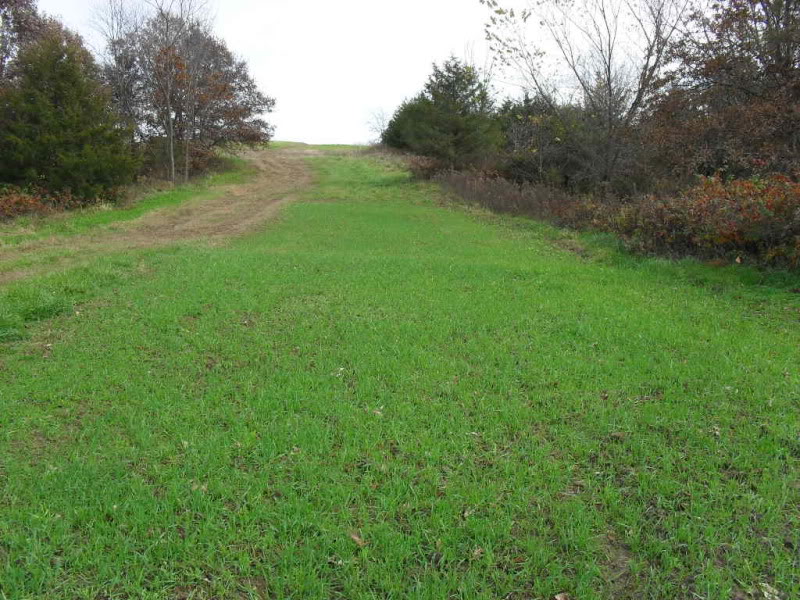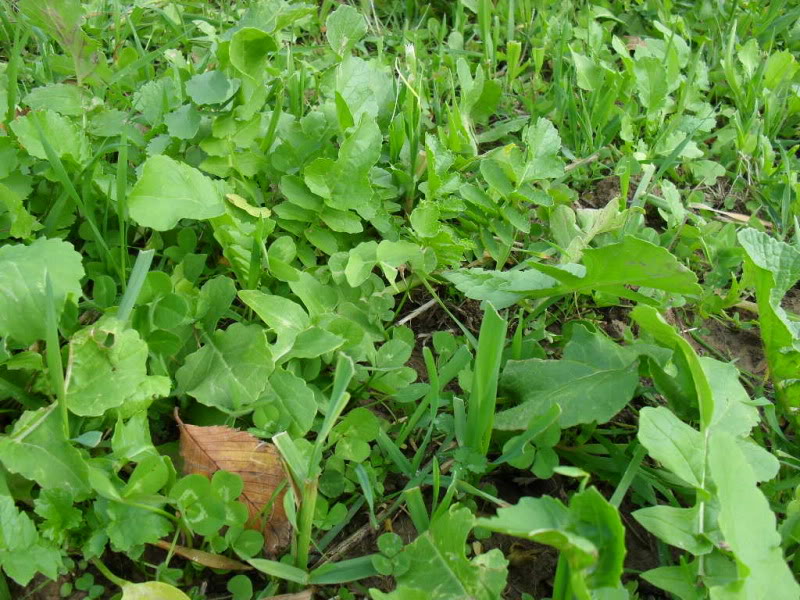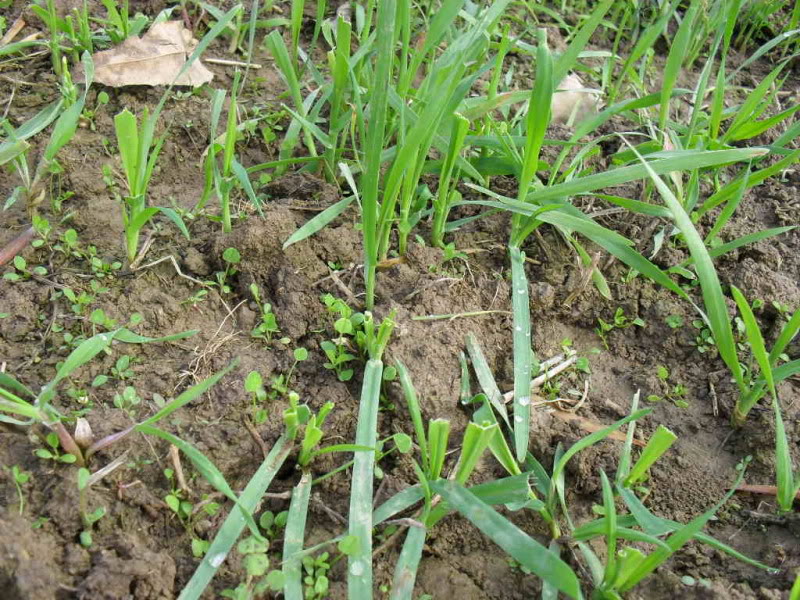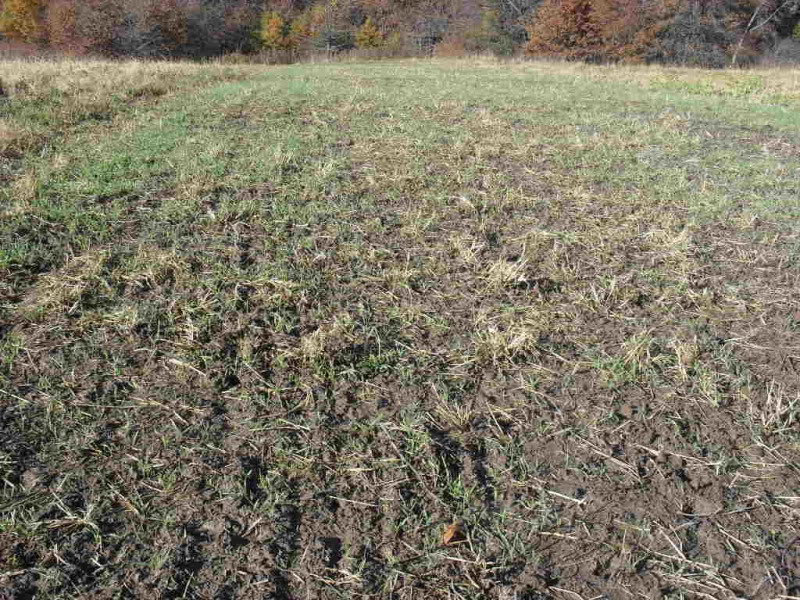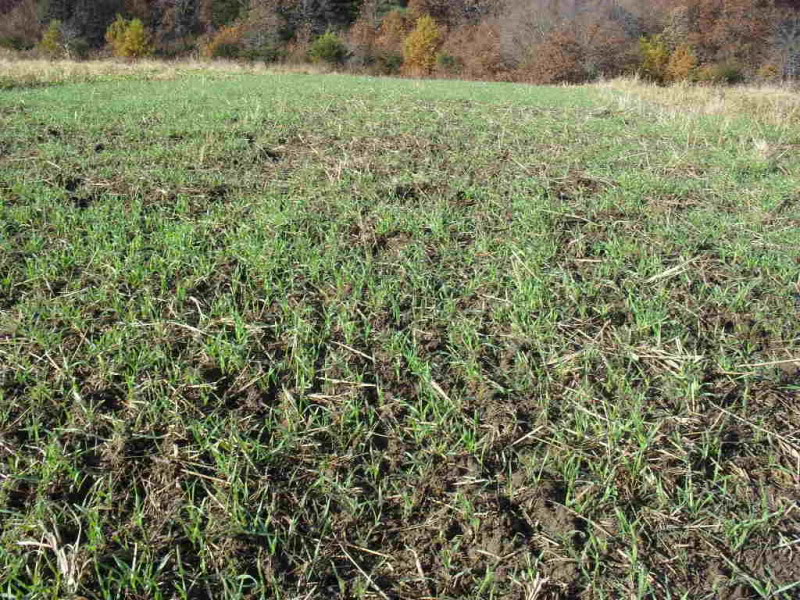It's now mid October and here in the midwest it's getting beyond the point where fall applied fertilizer is going to be of much benefit to the growth of your rye/pea and clover combinations.
It is a great time to apply fertilizer that can benefit the clovers next spring and next years crop (such as brassicas, corn, milo etc)
Our temps here are struggling to reach 50 now and freezing at night so urea is much less volatile then when soil temps are 70 degrees or above.
Now personally I would not attempt to apply urea in and of itself right now unless you will be planting corn next year and you would like to notill the crop in which case putting urea or triple 19 could be beneficial and safely done ex[ecting some losses:
Urea applied in the fall has generally not been as effective as AA. This is especially true in south-central Minnesota and Iowa. When fall soil-moisture conditions are dry, there is little difference between AA and urea. But when soil-moisture content is high, fall applications of urea haven't performed as well as AA.
It is a fine time though to start building P&K levels if you have the time and weather permits.
You may find however that many fertlizer mixes may be 10-26-26, 8-36-36 or 6-24-24 and you may also find that a soil test shows that you need 300-400#'s per acre.
By applying in the fall you will not have to worry about losing all nitrogen in the mix and in the spring the rye will absorb it into it's root systems and then re-release it as it decomposes.
Here are some thoughts on fall applied urea.....
Fall Surface-Applied Urea Timelines
During late October/November, there may be days where soils are not deeply frozen, but frozen enough to hold up fertilizer applicators. On the warming side of the freeze and thaw cycle, where water can still move into the soil, urea can be applied with little danger of loss.
This time of year, urea can stay on the surface for a week with nearly zero loss.
When snow melts into the soil, it will move the urea into this soil, protecting it from losses due to volatilization or surface water movement. As the winter deepens, this opportunity will be lost, for although the more frozen soil will hold up equipment, it also will not permit movement of urea into the soil. Surface water movement that could move urea is hard on the pocketbook and the environment. Pay attention to the freeze-thaw cycle and apply urea on the thaw side of the cycle.
When we have warmer humid conditions such as spring and early summer the following happens:
When applied to soil, urea is hydrolyzed by the enzyme urease to NH4+. Depending on soil pH, the NH4+ may form NH3, which can be volatilized at the soil surface, as represented in the following reactions:
CO(NH2)2 + H+ + 2H20 --> 2NH4+ + HC03-
NH4+ ---> NH3 + H+
Urea hydrolysis proceeds rapidly in warm, moist soils, with most of the urea transformed to NH4+ in several days.
So warm weather urea applications need to either be tilled in or just before a heavy rain to push it into the soils.
I just wanted to share this because many ask...
is it too late to apply nitrogen?
It may not benefit the crop right now but it also will not be lost and will be utilized in the spring months and recycled when the winter rye is killed or plowed under....




